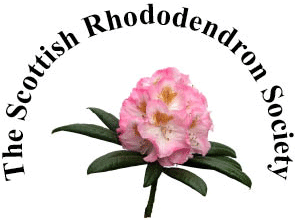By John Roy, SRS Autumn Review 2014
I recently came across an interesting document online about whether or not rhododendrons “poison” the soil in which they grow. I have always thought that it would not be in a plant’s best interests to poison the environment into which it is fastened, unless it was highly evolved to deal with the toxins of its own creation.
Some portrayers of this theory make bold statements such as: “Rhododendron poisons the soil around it so that other plants cannot grow.” Plantlife.
“It produces toxins, and suppresses other plants by poisoning the soil as well as year round shading.” Greenham & Crookham [West Berks.] Conservation Volunteers.
“Although considered attractive, this belies its true nature which is to shade out native species, leaving an impoverished landscape in its wake. To do this, it has a nasty trick up its sleeve – the roots are actually toxic to other plants! So not only does Rhododendron block out life-giving light, but it poisons the soil as well.” Ulster Wildlife Trust.
“As well as shading large areas to cut out light for other plants to grow, the bush poisons nearby soil with chemicals that kill other species.” Jenny Fyall, news.scotsman.com.
“This [R. ponticum] litter remains even after the plant is eradicated and can form a toxic humus layer, which is reported to retard new growth of other plant species for up to seven years.” Non-Native Species Secretariat.
Dealing with invasive Rhododendron ponticum, the author puts forward his own thoughts, citing lack of light and changes to the natural soil micro-organisms, summarising:
As rhododendron encroaches and the native community becomes impoverished, the biodiversity of the flora and soil biota decline in tandem. When rhododendron has become a monoculture covering many hectares, we can justifiably suppose that very little remains to represent what was once a dynamic, mycorrhiza-supported, species rich community, other than R. ponticum, one or two associated ericoid mycorrhizal fungi and a handful of shade/rhododendron tolerant plants and plucky survivors.
That is a very poor landscape and a disastrous starting point for its recovery.
Recolonisation by native flora of an area cleared of rhododendron is more likely to be inhibited by: (a) soil rendered inhospitable by R. ponticum leaf litter; (b) poor nutrient supply and (c) low availability of nutrients due to local extinction of the soil community that normally facilitates their mobilisation, than by soil ‘poisoning’.
Whether during occupation or after clearance, it would have been better if the rhododendrons had never arrived in the first place.
If one did not consider the alternative implications of catastrophic reductions in biodiversity as discussed above, one might, influenced by rumour, incorrectly conclude that the soil had been poisoned.
The full article was found at: (no longer available)
http://www.slef.org.uk/userfiles/file/slef-pdfs/rhododendron_poisons_the_soil.pdf
